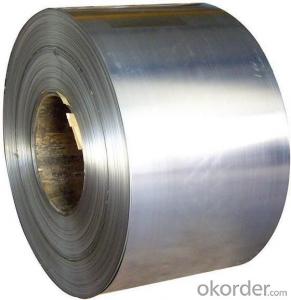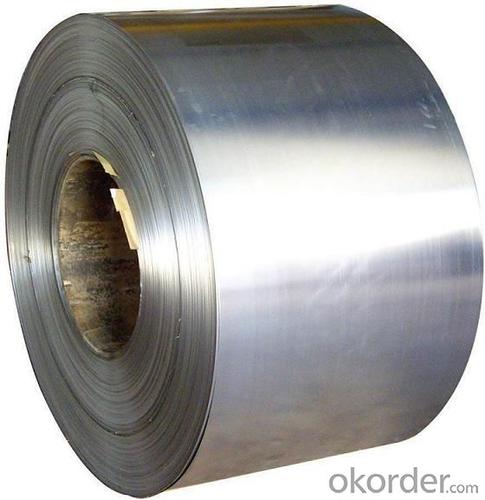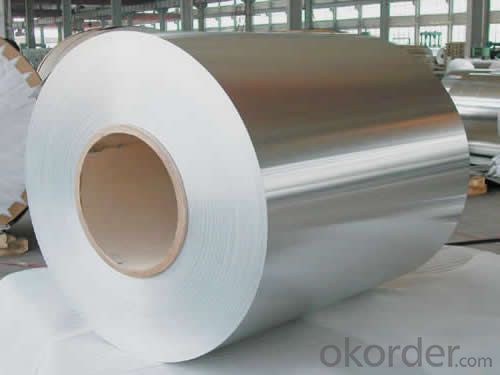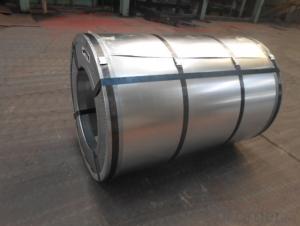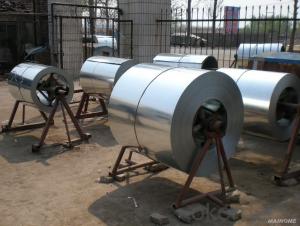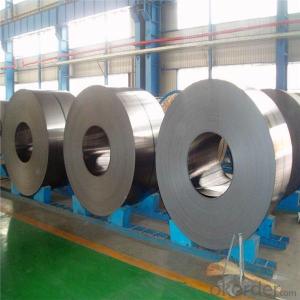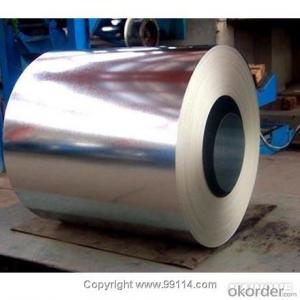Stainless steel cold rolled coil for construction
- Loading Port:
- Shanghai
- Payment Terms:
- TT OR LC
- Min Order Qty:
- 1 m.t.
- Supply Capability:
- 800 m.t./month
OKorder Service Pledge
OKorder Financial Service
You Might Also Like
Product: | competitive price astm ss304 cold rolled stainless steel roll coil for construction |
Grade: | 304 |
Standard: | ASTM,AISI,JIS,EN,DIN,GB |
Surface: | 2b |
Thickness: | cold rolled:0.3mm-6mm,hot rolled:3-100mm |
Width: | 1000mm/1219mm/1250mm/1500mm/1524mm/1829mm/2000mm, or as customer’s requires. |
Length: | As customer’s requires. |
Edge: | Slit/Mill Edge |
Origin: | TISCO,POSCO,LISCO,JISCO,BAOSTEEL,BAOXIN,Eastern Special Steel etc |
Productivity: | 800MT/Month |
MOQ: | 1 Ton |
Payment Term: | 30%T/T in advance ,the balance against the B/L copy 30%T/T in advance ,the balance against the L/C at sight 100%L/C at sight
|
Price Term: | FOB/CFR/CIF |
Delivery: | 10 days after received the deposit of T/T 10 days after received the deposit of L/C original |
Packaging: | standard export packing |
Application: | Plate heat exchanger, bellows, household goods (1,2 tableware, cabinets, indoor pipes, water heaters, boilers, bath), auto parts (windshield wipers, muffler, moldings), medical equipment, building materials, chemical, food industry , agriculture, ship parts, and so on. |
Chemical composition&Mechanical properties
| Chemical composition: | ||||||
| C | Si | Mn | Cr | Ni | S | P |
| ≤0.07 | ≤1.0 | ≤2.0 | 17.0~19.0 | 8.0~11.0 | ≤0.03 | ≤0.035 |
| mechanical properties: | ||||||
| Tensile strength σb(MPa) | Conditions yield strength σ0.2 (MPa) | Elongation δ5 (%) | Section shrinkage ψ(%) | Hardness: | ||
| ≥ 520 | ≥ 205 | ≥ 40 | ≥ 60 | ≤ 187HB; ≤ 90HRB; ≤ 200HV | ||
- Q: i am debating weather to get the hercules rmx or the steel and from what i have read, the only differences between them is the rmx has a sound card (built in interface-to connect to the computer, correct me if im wrong) and that the steel has more effects. however, i cannot find out which effects it has so it would be a big help if someone can answer this for me.thanx
- I guess that since Steel doesn’t have headphones connection and a built-in soundcard, one won’t be able to play a track on one deck and prelisten the track on the other without using an external usb soundcard, right? I was wondering what’s the point in releasing a product like this if you also have to buy a bunch of equipment to be able to do sth “fondamental”: play while preparing your next song. However since the steel is meant for DJ’s who already have a great soundcard, but I don’t see why a Steel+sound card is ONLY for pro’s. Yes it’s designed for pro’s but you can use it as a beginner. Some consoles you also need to consider: Hercules Steel/RMX, Numark OMNI/Steath. It's all personal decision. Peace, Love Happiness
- Q: Myself, iam Working In a Steel Fabrication Company. I completed my Engineering in 2006 and immediately recruited in this company in Oman. My company is Steel Fabrication company .So as i am new to this field, i just need some basic knowledge regarding this Steel Fabrication.Waiting for ur early reply.
- make searches on internet; it's the best way to learn.
- Q: Is sterling silver better than surgical steel as far as being hypoallergic in earrings? If I have a choice which should I get? Thanks!
- Surgical steel.
- Q: How are steel coils inspected for defects after rewinding?
- Steel coils are inspected for defects after rewinding through a thorough visual examination and various non-destructive testing techniques such as ultrasonic testing, magnetic particle inspection, and eddy current testing. These methods help identify any surface defects, internal flaws, or deviations in dimensions, ensuring the quality and integrity of the steel coils.
- Q: What are the different methods of heat treatment for steel coils?
- Steel coils can undergo various heat treatment methods, each offering unique benefits and applications. One method is annealing, where steel coils are heated to a high temperature and gradually cooled in a controlled environment. This relieves internal stresses, enhances ductility, and refines the grain structure, resulting in softer and more machinable steel. Another method, normalizing, is similar to annealing but involves a faster cooling process. It aims to refine the grain structure and achieve uniform hardness throughout the coils. Normalizing also eliminates residual stresses and improves mechanical properties. Quenching and tempering is a two-step process that begins with heating the coils to a high temperature and rapidly cooling them in a quenching medium like oil or water. This creates a hard and brittle phase called martensite. To enhance toughness and reduce brittleness, the coils are reheated to a lower temperature and held there for a specific duration, a process known as tempering. Tempering helps decrease internal stresses and increase ductility and toughness. Case hardening is another method used to increase the surface hardness of steel coils while maintaining a soft and ductile core. This involves heating the coils in a carbon-rich atmosphere, allowing carbon to diffuse into the surface layer. The result is a hard outer layer, known as the case, while the core retains desired mechanical properties. Stress relieving is performed by heating the coils to a specific temperature and holding them there for a sufficient time. This minimizes residual stresses from previous manufacturing or heat treatment processes. Stress relieving improves dimensional stability, reduces the risk of distortion or cracking, and enhances overall performance. The choice of heat treatment method depends on desired properties, intended application, and specific requirements of the end product. Each method has its own advantages and can be customized to achieve the desired balance between hardness, toughness, ductility, and other mechanical properties.
- Q: The length of a steel beam increases by 0.78 mm when its temperature is raised from 22 degrees C to 35 degrees C. What is the length of the beam at 22 degrees C (in meters)?I used: L = (0.78 mm)/[(9/5)(.00000645 F)(13)] = 5.17 meters but Mastering Physics said Not quite. Check through your calculations; you may have made a rounding error or used the wrong number of significant figures. I'm confused because this is how we learned this kind of problem in class, so if anybody knows what I did wrong, feel free to correct my errors! Thanks
- we may use the formula ΔL=α(Lo)(Tf-To) where Lf is the length of steel at temp. Tf Lo is length at To α is the coefficient of linear expansion of steel which is 11x10^-6/°C ΔL=0.78mm (the change in length) Lo=? ΔL=α(Lo)(Tf-To) Lo=ΔL/[α(Tf-To)] Lo=(0.78x10^-3m)/[(11x10^-6/°C)(35°C-2...? Lo=5.455m answer
- Q: Can steel coils be used in structural applications?
- Yes, steel coils can be used in structural applications. Steel coils are often processed into various shapes and forms, such as beams, columns, or plates, to provide structural support and strength in construction projects. The use of steel coils ensures durability, load-bearing capacity, and resistance to deformation, making them suitable for structural applications in buildings, bridges, and other infrastructure projects.
- Q: What are the potential dangers of handling steel coils?
- There are several potential dangers associated with handling steel coils. Firstly, steel coils are heavy and can pose a risk of physical injury if not handled properly. The weight of the coils can cause strains, sprains, or even more serious injuries if dropped or mishandled. This is particularly true when using manual lifting equipment or when attempting to move the coils without proper training or assistance. Secondly, steel coils often have sharp edges or protruding parts that can cause cuts or puncture wounds if not handled with care. These sharp edges can be especially hazardous when attempting to manipulate or position the coils during transportation or storage. It is important to wear appropriate personal protective equipment, such as gloves, to minimize the risk of injury. In addition, steel coils can become unstable if not adequately secured or balanced. Improper stacking or storage of the coils can lead to them shifting or falling, potentially causing serious injuries or damage. It is crucial to follow proper stacking and storage procedures, including using appropriate equipment and supports, to ensure stability and prevent accidents. Furthermore, steel coils are often stored in areas with limited space or uneven surfaces, increasing the risk of trips, falls, or collisions. It is essential to maintain clear and well-organized storage areas, free of obstacles or hazards, to reduce the likelihood of accidents. Lastly, steel coils can be subject to corrosion or rust, which can weaken the metal and compromise their structural integrity. This can increase the risk of the coils collapsing or breaking during handling, potentially causing injuries or damage to property. Regular inspections and maintenance of the coils, as well as proper storage in dry and well-ventilated areas, can help mitigate this risk. Overall, the potential dangers of handling steel coils include physical injuries from their weight and sharp edges, instability during transportation or storage, accidents due to limited space or uneven surfaces, and the risk of structural failure due to corrosion or rust. It is crucial to follow proper safety protocols, receive appropriate training, and use the necessary equipment to minimize these risks and ensure safe handling of steel coils.
- Q: What are the guidelines for handling damaged steel coils?
- The guidelines for handling damaged steel coils include assessing the extent of the damage, ensuring proper storage conditions, using appropriate lifting equipment, and implementing safety measures to prevent injuries or further damage. It is crucial to follow manufacturer recommendations and consult with experts in the field for specific guidelines based on the type and severity of the damage.
- Q: How are steel coils used in the production of shipping containers?
- Steel coils are used in the production of shipping containers as they are formed and shaped into the required structure and size. The coils are unrolled and cut into sheets, which are then molded and welded to create the walls, roof, and floor of the container. This process ensures the container's strength, durability, and ability to withstand harsh shipping conditions.
Send your message to us
Stainless steel cold rolled coil for construction
- Loading Port:
- Shanghai
- Payment Terms:
- TT OR LC
- Min Order Qty:
- 1 m.t.
- Supply Capability:
- 800 m.t./month
OKorder Service Pledge
OKorder Financial Service
Similar products
Hot products
Hot Searches
Related keywords
